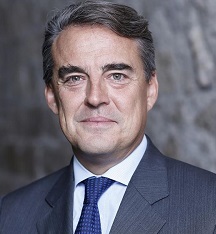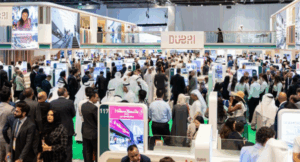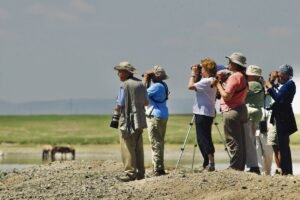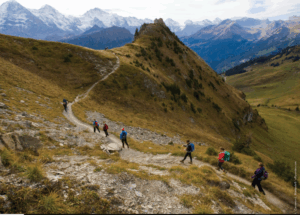Global airline industry- 4.6 billion travelers in 2019

Alexandre de Juniac —
Overall, we expect the airline industry will generate a profit of $28 billion this year, marking 10 years of being in the black. At the same time, our customers will enjoy fares that are 40% lower than a decade ago. And we will reward shareholders for a fifth consecutive year by generating a return on invested capital that exceeds the cost of capital.
Nevertheless, we have also run into strong headwinds this year; and profits are being squeezed compared to 2018. Passenger demand is rising, but the air cargo market is shrinking. Furthermore, costs are increasing, including fuel, labor and infrastructure.
Long-term, we are of course optimistic. We project a doubling of demand over the next two decades. This year we forecast 4.6 billion travelers. In 2037 we see 8.2 billion. China and India will account for 45% of that growth. Even more than today, the travelers of the future will come from all walks of life and economic means.
It is also clear that the desire for more connectivity will put increasing pressure on the air transport system. A system that we all know already has challenges. Inefficiencies lead to delays, unnecessary emissions, and higher costs.
Earning just over $6 per passenger, airlines cannot afford any unnecessary costs. And as we strive to cut emissions to half 2005 levels by 2050, any unnecessary emissions compromise our environmental license to grow.
So, airlines’ expectations of CANSO members are extremely high.Those expectations begin with safety—our common and ultimate priority. Air Navigation Service Providers (ANSPs) are rightly proud of their role in keeping the skies safe. On behalf of IATA’s members, I want to pay tribute to the professionalism and dedication of all the men and women who work on the front line and behind the scenes to ensure air navigation services are safe.
In addition to safety, airlines have three key expectations of ANSPs: Efficient service , Sufficient capacity, and Greater openness and consultation.
Efficiency
Airlines need efficient, reliable and cost-effective air traffic management. Unfortunately, in many parts of the world, progress on eliminating delays is slow, and cost efficiency could be better. The implementation of Space Based ADS-B in the North Atlantic is one example. While IATA and the airlines recognize the potential benefits of Space Based ADS-B technology, there are still concerns regarding the cost-effectiveness of its’ implementation in the North Atlantic which have not been effectively addressed. As per the ICAO Global Air Navigation Plan, for any technology, a positive cost-benefit analysis should justify the investment and such analysis must be done in consultation with the airlines.
In Europe in particular, reliability and efficiency is approaching a crisis point. Enroute delays doubled last year and will probably be worse again this year. Additionally, efforts to reduce fuel burn, and therefore emissions, have moved slowly. ATM has a huge opportunity to reduce CO2 emissions through more efficient routes. Such modernization and reform would also help reduce the noise impact on communities, and generate more capacity.
Sufficient Capacity
In fact, capacity provision is perhaps our greatest concern. We already have a problem coping efficiently with today’s demand. So there is a huge amount of work to do as we prepare for an expected doubling of demand for air transport over the next two decades.
Even allowing for an increase in the average size of an airplane, we could see up to 80 million flights a year—double that of today. And it is entirely possible that these flights will be sharing airspace with 80 million or more drone flights. That’s airspace crowding of a completely different magnitude than we see today.
How will ANSPs be ready to manage this increase? Flexibility and adaptability are core to the successful answer to this question. We know growth is coming, but we also know the future is always unpredictable. We cannot be sure what new technologies and capabilities will emerge. Weather patterns will be more volatile. ANSPs will need to bear this in mind at every level of their business – from training, to operations, staffing levels, equipment procurement and investment plans. Clearly, more flexible use of airspace and better civil-military cooperation will be important, especially in China and the Gulf. More collaborative decision-making, such as envisaged in the European network manager 7-point plan, will also help.
Openness and Consultation
The third challenge I want to focus on is openness and consultation.We are partners in this business. Without planes, there would not be much for ANSPs to do. And without ANSPs, our planes would not go very far. So we need to work together.
For sure we do work together today. But my members tell me that they want to work even more closely with ANSPs. They want even greater transparency, more meaningful consultation and deeper dialogue. Your customers want to know you and work with you more closely. That’s a good thing.
And it is not just about airlines—ANSPs need to be more open with all stakeholders: governments, airports, the military, and emerging drone operators. Most crucially of all, we need to see ANSPs become more open with each other. Only through cooperation and harmonization can ANSPs remove the invisible borders in the sky that do so much to limit the efficiency and capacity of the system.
Examples of Success
Having set out what airlines expect from ANSPs, I think it’s fair to point out where we have already achieved successful models of cooperation. Two examples stand out: in China, and with various ANSPs in Europe.
IATA has successfully expanded cooperation with the Civil Aviation Administration of China. In April we placed the IATA China Air Traffic Flow Management liaison desk into the air traffic management bureau headquarters. This follows a long-standing similar arrangement in the US with the FAA.
In Europe, we’ve engaged with a group of forward-thinking ANSPs to develop National Airspace Strategies (NAS). With the support of their respective governments, three NAS have now been published: in Poland, Italy, and most recently in France. Spain, Bulgaria and Romania have publicly announced they will each develop a NAS as well.
In the UK, a full review of the Future Airspace Strategy is underway. And other European ANSPs are in discussions to start similar planning. The partnership approach from these European ANSPs has already been positive. We fully expect tangible benefits to follow.
These examples show that cooperation between airlines and ANSPs can be made deeper and more effective.
Challenges
We must build on these to tackle current and future challenges. That’s why today we’ve signed an MOU with CANSO to strengthen our cooperation. Because in addition to the minimum expectations I’ve already outlined, there are a number of very specific and big challenges which we have to be ready to tackle:
In Asia-Pacific, we need widespread implementation of the Asia Pacific Seamless ATM Plan. Failure to do so will result in significantly increased delays and fuel burn.
In the Middle East, geopolitical issues and lack of capacity remain the key challenges. We must work with ICAO and stakeholders in the region to ensure seamless operations.
In Africa, we’re advocating for a Seamless African Sky that will drive enhancements in safety and the efficiency of flight operations through a collaborative decision-making approach.
At the global level, with ICAOand other partners, we must progress the global concept of Trajectory Based Operations which will be enabled by the deployment of System Wide Information Management (SWIM) infrastructure.
Safely and efficiently integrating Unmanned Aircraft systems (UAS) or drones, is a key global challenge. We must work with international organizations, regulators, and other partners to achieve this. Harmonized regulation will be key, so the rules of engagement are consistent globally.
And we must work together to jointly earn our license to grow. We share a commitment to cut emissions to half 2005 levels by 2050. Along with meeting that commitment, we need to keep the public and our stakeholders informed of the progress we are making.
All this is to say that despite signs of increasing cooperation, we are not moving fast enough to reform and modernize ATM in time to meet growing demand. We need ANSPs to be more customer focused, financially autonomous, and performance driven. That can only be achieved through partnership and collaboration towards a cost-effective ATM transformation.
Therefore if there is one thought I would like to leave you with, it is this: please think about the number one thing you could do for your customers which would improve their business. It might be to cut a charge, or fix a capacity bottleneck. Or introduce a new route to reduce fuel burn and CO2. Whatever it is, please ask yourself what you can do to service that number one priority by the time of the next CANSO AGM.
( Remarks of IATA CEO and Director General Alexandre de Juniac at the CANSO Global ATM Summit and 23rd AGM held in Geneva)
June 18, 2019














